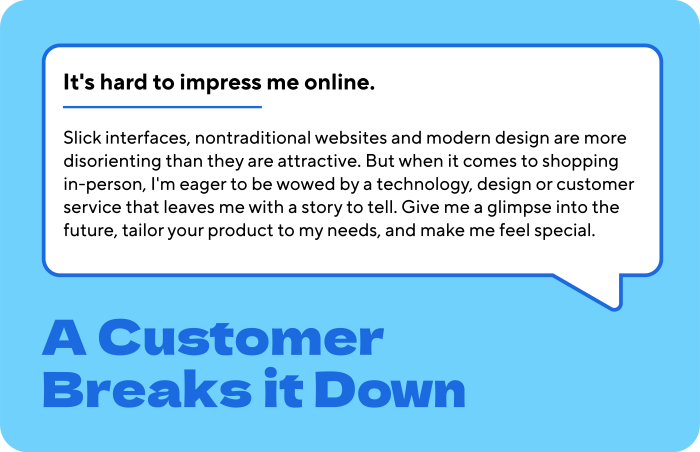
As anyone who has visited a mall in the last five years can tell you, the retail landscape has evolved, and the role of physical stores is changing. While it’s been trendy to predict the death of brick-and-mortar stores, the truth is far more nuanced. Physical stores are still (and will always be) an important part of the retail experience, but their role has shifted to meet the changing needs of consumers.
Among the most daunting challenges facing retailers is how to realize the potential of omnichannel strategies, and breathe life into a sometimes arcane concept. Consumers expect a seamless shopping experience across all channels, from online to in-store, and everything in between. However, demand variability, supply chain volatility, and staffing challenges continue to plague retailers, making it perpetually difficult to execute omnichannel well.
“We are at an inflection point,” says KWI product lead Rob Le Piane. “From a retailer standpoint, I’m struggling to make omnichannel work well. And from the consumer standpoint, I just want to show up and get the stuff that I want. And the omnichannel kind of use cases sit right in the middle.”
Despite the challenges that omnichannel presents, retailers are finding innovative ways to create a seamless experience for their customers. One way they’re doing this is by positioning physical stores as a central part of their omnichannel strategy.
Buy Online, Return In-Store
A popular use case for physical stores in the omnichannel experience is the “buy online, return in-store” model. Not only does this offer customers more flexibility and a convenient alternative to shipping back products, it also drives traffic to physical stores, providing an opportunity for additional sales and customer touch points.
Customer Service Experiences
Another way physical stores are being leveraged in the omnichannel experience is by serving as foundations of exceptional customer service experiences. As online shopping has grown in popularity, quality customer service has become an increasingly important differentiator for retailers. By providing personalized and attentive customer service in-store, retailers can create a memorable experience for their customers, leading to increased loyalty and higher sales.
Optimizing Stores for New Behaviors
Savvy retailers are doing more than simply incorporating physical stores into their omnichannel experiences, they’re reinventing their stores to meet the changing needs of consumers. With less in-store patience than ever before, consumers want things to be frictionless and easy. That’s why retailers should be focused on creating experiences that remove the barriers to shopping in-store.
One trend that’s emerged in recent years (and is likely here to stay) is the rise of experiential shopping. This is especially true post-pandemic, as consumers crave social interaction and new experiences. Retailers are responding by providing experiences that can’t be had online.
For example, Nordstrom has invested in creating a more personalized experience for their customers by offering services like personal stylists, alterations, and beauty consultations, as well as in-store cafes and restaurants. These services not only provide added value for the customer but also help differentiate Nordstrom from its competitors. In-person experiences like these make an impact on customer loyalty, and brands that invest in creating memorable experiences will reap the rewards.

Nike has done something similar by opening several “House of Innovation” stores in major cities around the world. These stores are designed to provide a more interactive and immersive experience for customers, using features like Nike Fit technology to scan a customer’s feet to find the perfect shoe size, and AI that offers personalized product recommendations based on the customer’s preferences and purchase history.
The importance of customer experience in retail
It’s important to note that the role of a store is not just about transactions, but also to create a memorable experience for customers. Retailers that invest in customer experience are better positioned to navigate changing trends and fickle consumers. It’s not hyperbole to say that today’s environment demands customer experiences that allow retailers to stand out from the crowd.
Time to adapt is running out. The pandemic has accelerated an already rapid digital transformation in the retail industry. Brands that had already begun investing in technology and digital platforms were certainly better prepared to handle the surge in online shopping during the pandemic. However, even with the global emphasis on digital, physical stores remain a crucial part of the retail experience.
Move faster, be more agile
To sum it up, the role of physical stores in retail is changing, but they’re not going away. The COVID-19 pandemic has shown how quickly the retail industry can change, and how critical it is for retailers to adapt rapidly.
Agility and speed are particularly important when it comes to the supply chain. With demand variability and supply chain volatility, retailers need to be able to respond to changing circumstances to ensure they can meet customer needs.
Retail is always in a state of disruption, and brands need to move faster and be more agile to keep up with the changing landscape.
Having a strategic partner like KWI can help you move faster and be ready for whatever is coming next…